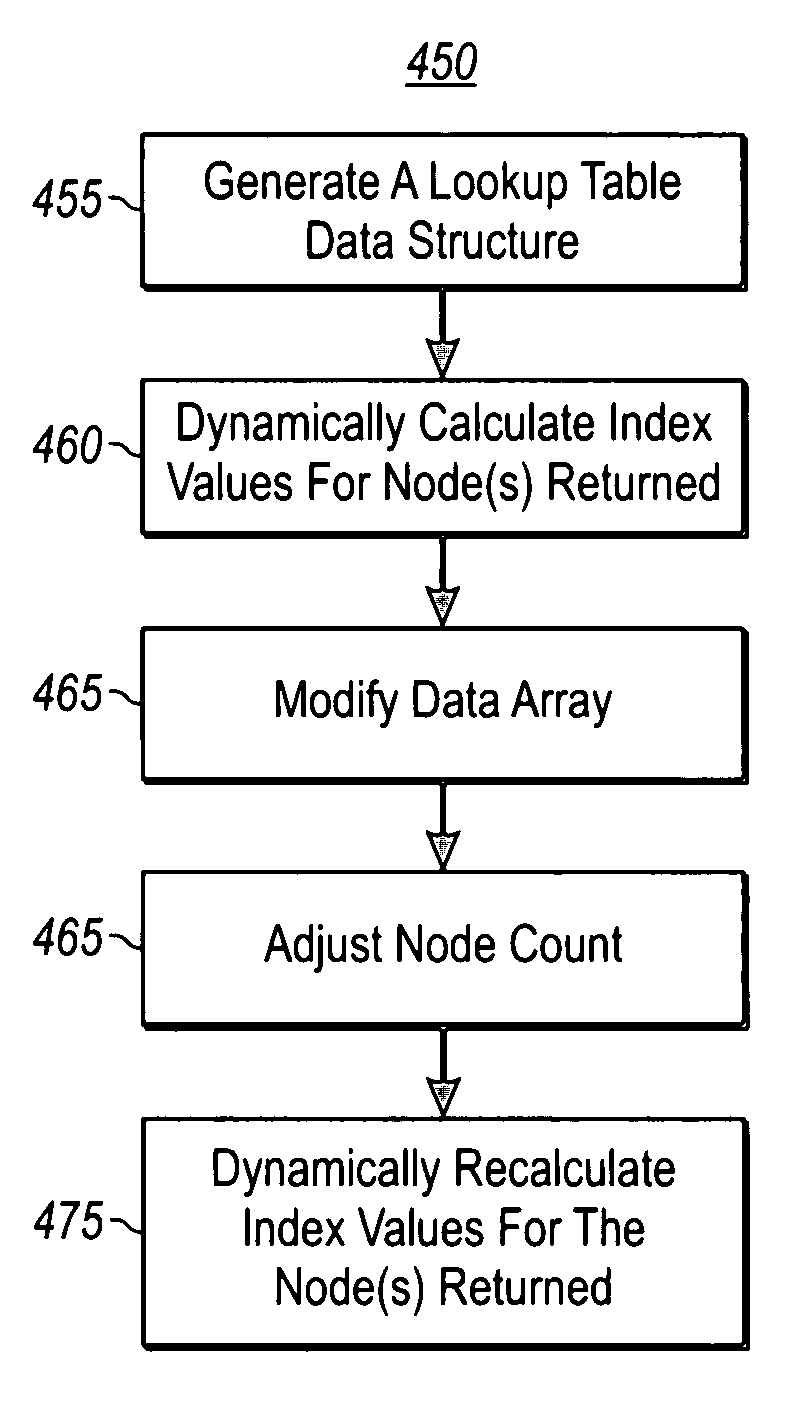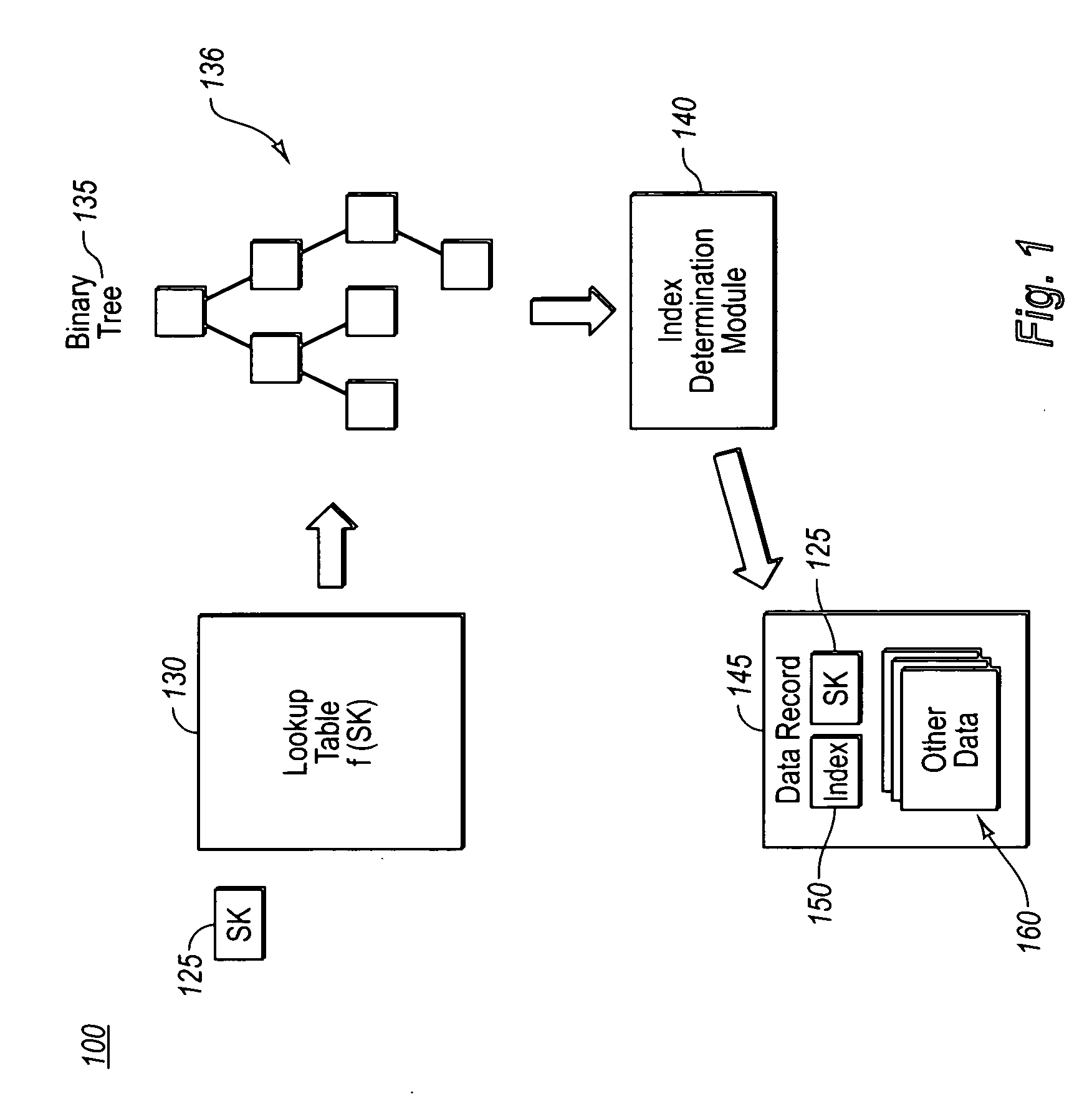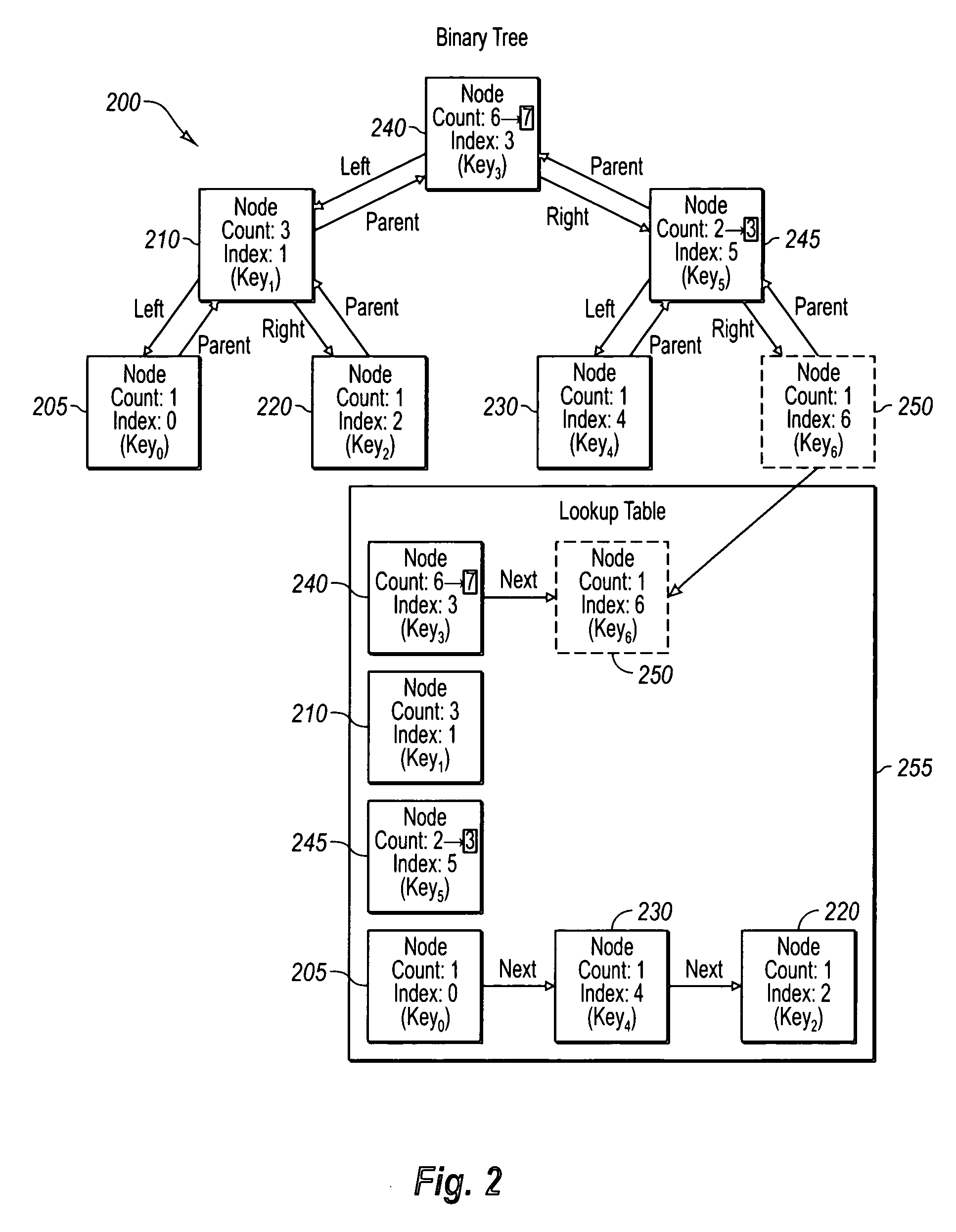Scalable retrieval of data entries using an array index or a secondary key
a data entry and array index technology, applied in the field of scalable retrieval of data entries, can solve the problems of arrays also suffering from performance problems, not allowing random access, and not efficient insertion and deletion of elements, and achieve the effect of efficient determination of index values
- Summary
- Abstract
- Description
- Claims
- Application Information
AI Technical Summary
Benefits of technology
Problems solved by technology
Method used
Image
Examples
Embodiment Construction
[0017] The present invention extends to methods, systems, and computer program products for providing scalable retrieval of entries or records by array index and / or by a secondary key. The embodiments of the present invention may comprise a special purpose or general-purpose computer including various computer hardware or modules, as discussed in greater detail below.
[0018] As previously mentioned, lookups in data objects or structures that support indexing on a dynamically sorted systems (e.g., file management systems, object management consoles, spreadsheets, etc.) as well as modifications to the data records therein (e.g., insertions and deletions) typically have a cost factor of O(n) / 2 or greater, where n is the total number of recorded elements within the data object. Example embodiments improve the lookup times and modification costs by using a combination of data structures to determine index values for secondary keys and vice versa. More specifically, exemplary embodiments ...
PUM
 Login to View More
Login to View More Abstract
Description
Claims
Application Information
 Login to View More
Login to View More - R&D
- Intellectual Property
- Life Sciences
- Materials
- Tech Scout
- Unparalleled Data Quality
- Higher Quality Content
- 60% Fewer Hallucinations
Browse by: Latest US Patents, China's latest patents, Technical Efficacy Thesaurus, Application Domain, Technology Topic, Popular Technical Reports.
© 2025 PatSnap. All rights reserved.Legal|Privacy policy|Modern Slavery Act Transparency Statement|Sitemap|About US| Contact US: help@patsnap.com



